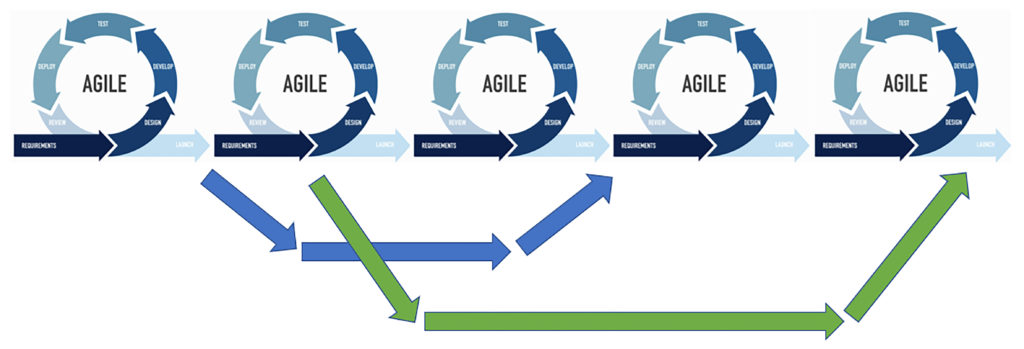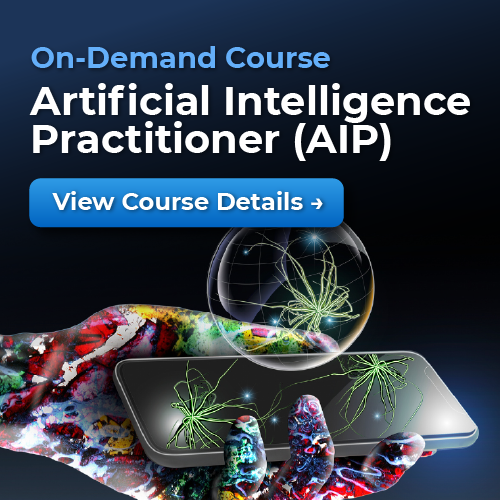By Luigi Morsa, Ph.D.
July 7, 2022
The last two decades have seen the emergence of a number of software development methods in response to the inefficiency of software development methods in rapidly changing environments (Highsmith, 2004).
The most popular and pioneer methods, as highlighted by Conboy et al. (2009), include eXtreme Programming (XP) (Beck and Fowler, 2001) and Scrum (Schwaber and Beedle, 2002). This family of methods are now commonly known as agile, and emerged from the formation of the Agile Alliance and the publication of the Agile Manifesto (Fowler and Highsmith, 2001).
The success of such “new” methods relies on the fact that shifting customer needs are common in today´s marketplace (Graffius, 2016). The rapid response to change leads to substantial benefit such as fast time-to-market, higher satisfaction and continuous improvement. Especially in software environment where the goal or the final concept may not be well-defined at the beginning of a project, regular and repeated customer and stakeholder feedback can facilitate the incorporation of the needed adjustments.
We can say the agile methods have well-interpreted the so-called Copernican Revolution in management. As described by Steve Denning (2013), this is a paradigm shift from the 20th century view that customers revolve around the stationary “center of the universe”— the value chain of the organization—to the view that the organization is one of many organizations revolving around the customer. The organization survives and thrives only so long as it is agile enough to meet the customer’s shifting needs and desires.
As already pointed out, agile techniques were born to be applied in IT organizations for software development projects. However, today the principles of agile have spread to other corporate functions such as innovation. The reason is that products in the marketplace are becoming obsolete at a faster rate than ever before. Combined with an increase in new competitors entering the marketplace, companies are being pressured to shorten the product development life cycle for a speedy, time-to-market product launch. Agile innovation allows teams to launch new products quickly and at a lower risk than with traditional innovation practices (Kerzner, 2019).
Behind the launch of a new or even incremental product/concept, there is an idea. In this regard, as pointed out by Ted Levitt (2002), a former editor of Harvard Business Review and one of the most incisive commentators on innovation, it has to be stressed that ideation and innovation are not synonyms. It would be like confusing the forming of ideas and concepts with their implementation. It confuses creativity in the abstract with practical innovation. In other words, creativity is related to idea generation, whereas innovation is about idea implementation.
Organizations, by their very nature, are designed to promote order and routine; they could be inhospitable environments for idea developments. When we think “creativity”, usually the association goes to liberty, freedom, and not “clear structure” nor “well-defined tasks”. Science gives us the reason: studies have shown that rigorous task and structured work can hamper creative projects. Artists, writers and creative professionals also agree. They don’t like strict schedules, small tasks and organized charts and don’t see how it helps them unleash their talent (Del Marmol, 2019). If we apply this concept to a work environment, we could come up with the conviction that in the early stage of a new idea it would be appropriate to have as less rules as possible. It is hard to make a generalisation about how the initial stage of a new idea should be conducted, but definitely this phase has to be characterized by autonomy, trust, and freedom and cannot be bridled in rules, schedules, reiterative meetings and pressure to have small increments.
By looking at an agile process in temporal development, we can imagine that a promising idea could be taken out from the ordinary process, and then, put back when it is considered mature to receive the needed refinement. In the picture below, at two different times, two ideas were born, and they are emitted again in the ordinary process after staying outside two different time durations.

Figure: Parallel Paths of Ideas Development in an Agile Environment
How an idea is treated outside of Agile-Loops can change depending on the fields and companies´ strategy, but what is important is to have and ensure the needed freedom beforehand to start the routine and loop characterised by the phases, Design > Develop > Test > Deploy > Review, for example. Once the idea is ready for implementation, it will absolutely take advantage of agile methods— namely agile will help to obtain prototypes within short iterations and more in line with customer expectations. Rapid feedback is gold to the creative mind— this way you know how good your direction is and are able to adapt accordingly.
Finally, the Agile Method can be a powerful tool for innovation, however, it must not limit creativity. The recommendation is that the initial phase of a new concept has to be conceived as a private moment by the creator; he/she has to work in autonomy, with trust by escaping the hasty judgments of stakeholders, and avoid the rush to come to a conclusion or to an immediate application. Ideas have to be facilitated, supported, and above all, protected. Sometimes, visionary people see things not as well-apparent for anyone else. To avoid rejection, it is essential to share the ideas at the right time.
References
Beck, K. and M. Fowler (2001). Planning eXtreme Programming. Boston, MA, Addison-Wesley.
Conboy, K., Wang, X., Fitzgerald, B (2009). Creativity in Agile Systems Development: A Literature Review. In: Information Systems– Creativity and Innovation in Small and Medium-Sized Enterprises, pp. 122–134. Springer.
Del Marmol, L., (2019). How Does Agile Project Management Support Creative Projects? Agile Scrum Belgique Blog; https://www.agile-scrum.be/.
Denning S., (July 2013). The Copernican Revolution in Management. Forbes Media, LLC.
Fowler, M. and J. Highsmith (2001). “The Agile Manifesto.” Software Development 9(8): 28-32.
Graffius, S. M. (2016). Agile Scrum: Your Quick Start Guide with Step-by-Step Instructions Paperback. CreateSpace Independent Publishing Platform.
Highsmith, J. (2004). Agile Project Management. Boston, MA, Addison-Wesley.
Kerzner, H. (2019). Innovation Project Management: Methods, Case Studies, and Tools for Managing Innovation Projects. WILEY.
Levitt, T. (August 2002). Creativity Is Not Enough. Harvard Business Review
Schwaber, K. and M. Beedle (2002). Agile Software Development with Scrum. Upper Saddle River, NJ, Prentice-Hall.
About the Author
Aerospace Engineer, Project Manager
SII Germany Engineering & IT
Luigi’s passion for project management has led him to contribute to two books by Dr. Harold Kerzner, the pioneer and globally recognized expert in project management. Luigi wrote two cases studies about the Aircraft industry for Project Management Case Studies, 5th and 6th Editions (Wiley, 2017, 2022) and two sections (Open Innovation in Action; The Project Manager’s Role in Developing Innovation Skills and Ideas in People) and the chapter, “Innovation Management Software” for Innovation Project Management 1st and 2nd editions (Wiley, 2019, 2022). Recently, he has written together with Richard Maltzman, PMP and adjunct professor at Clark University (Boston), the chapter, “10 Lessons Learnt from Irresponsibility in Project Management” for the book De Gruyter Handbook of Responsible Project Management (De Gruyter, 2022).
In 2018, Luigi was a speaker at the Project Management Institute (PMI®) EMEA Congress to discuss the complexity of the aircraft industry market, with particular emphasis on the relationship between product and customer needs. He is author of three article appeared on the International Institute of Learning (IIL) blog: “Managing Conflicts in Projects” (2021); “Chess and Business Strategy” (2020); and “People Innovation: A New Vision to Innovate” (2019).






